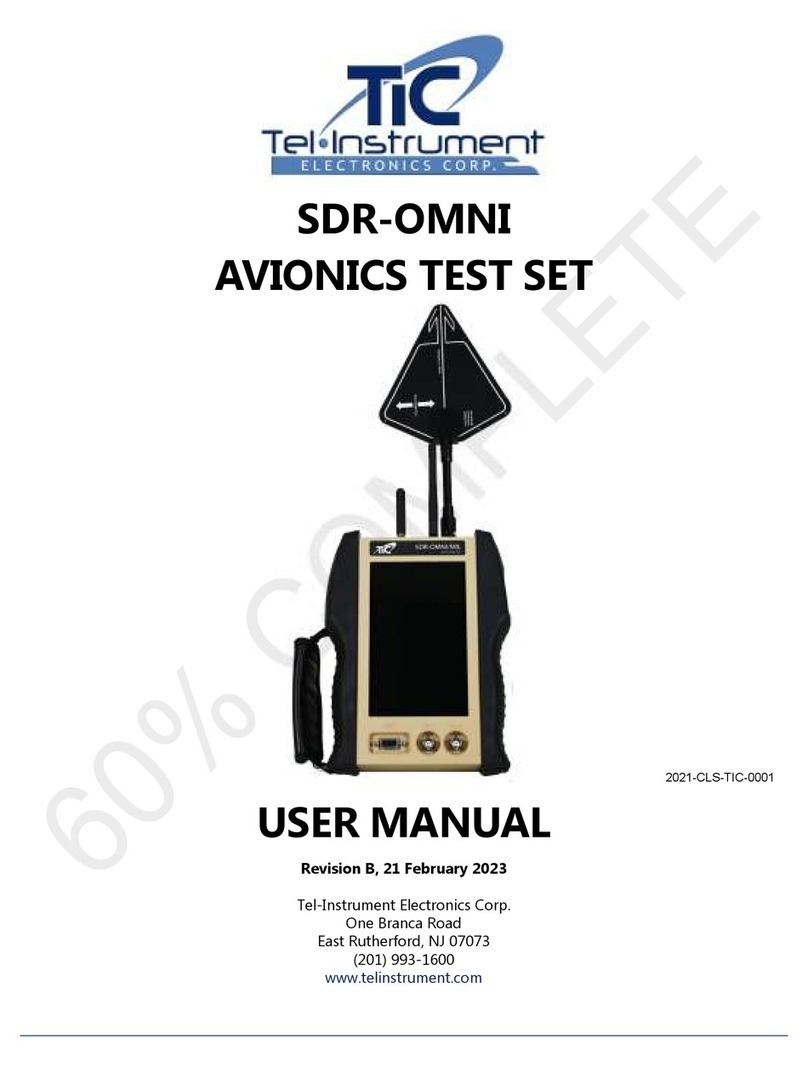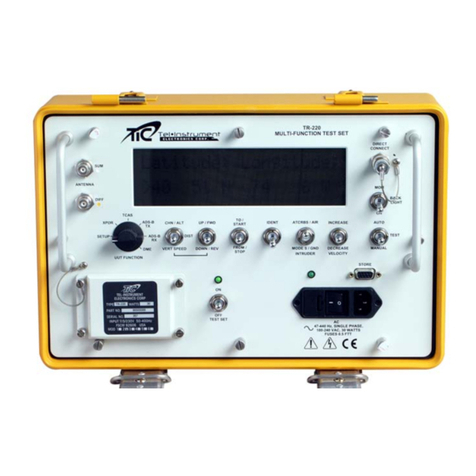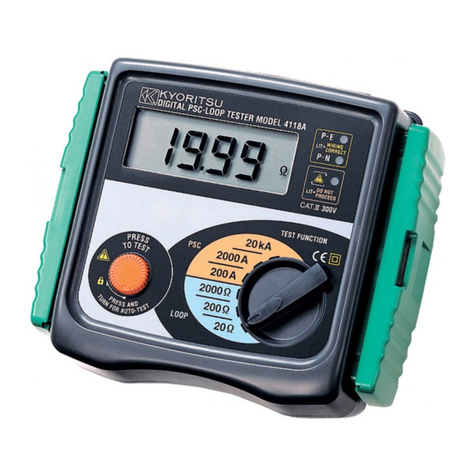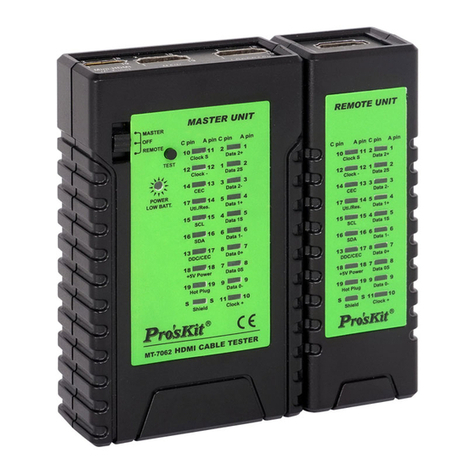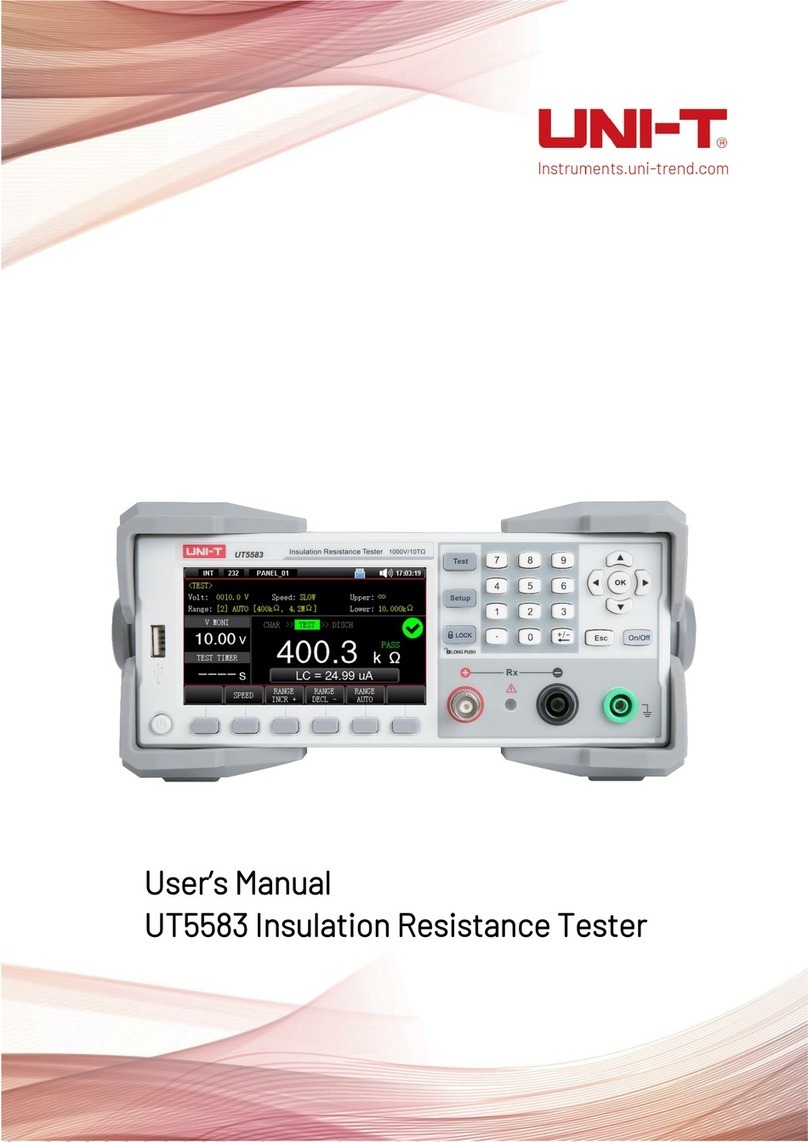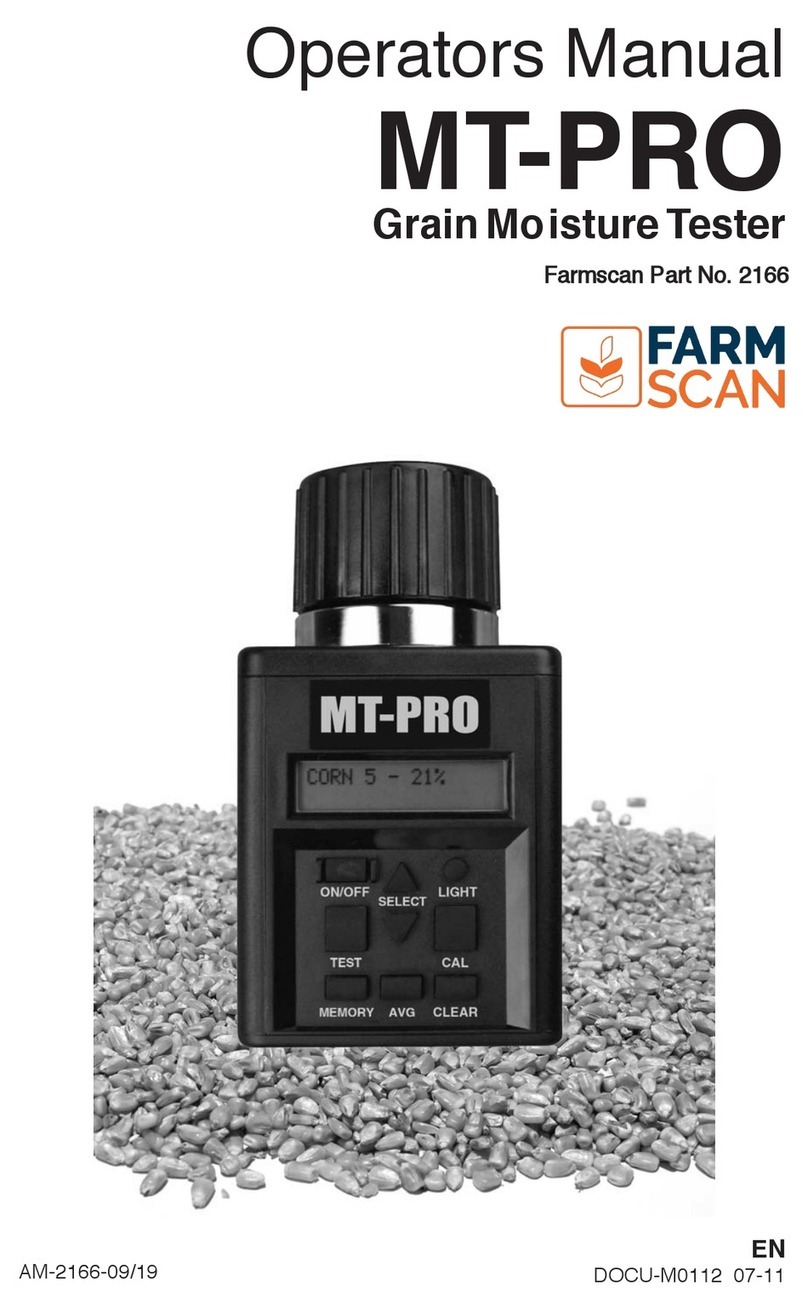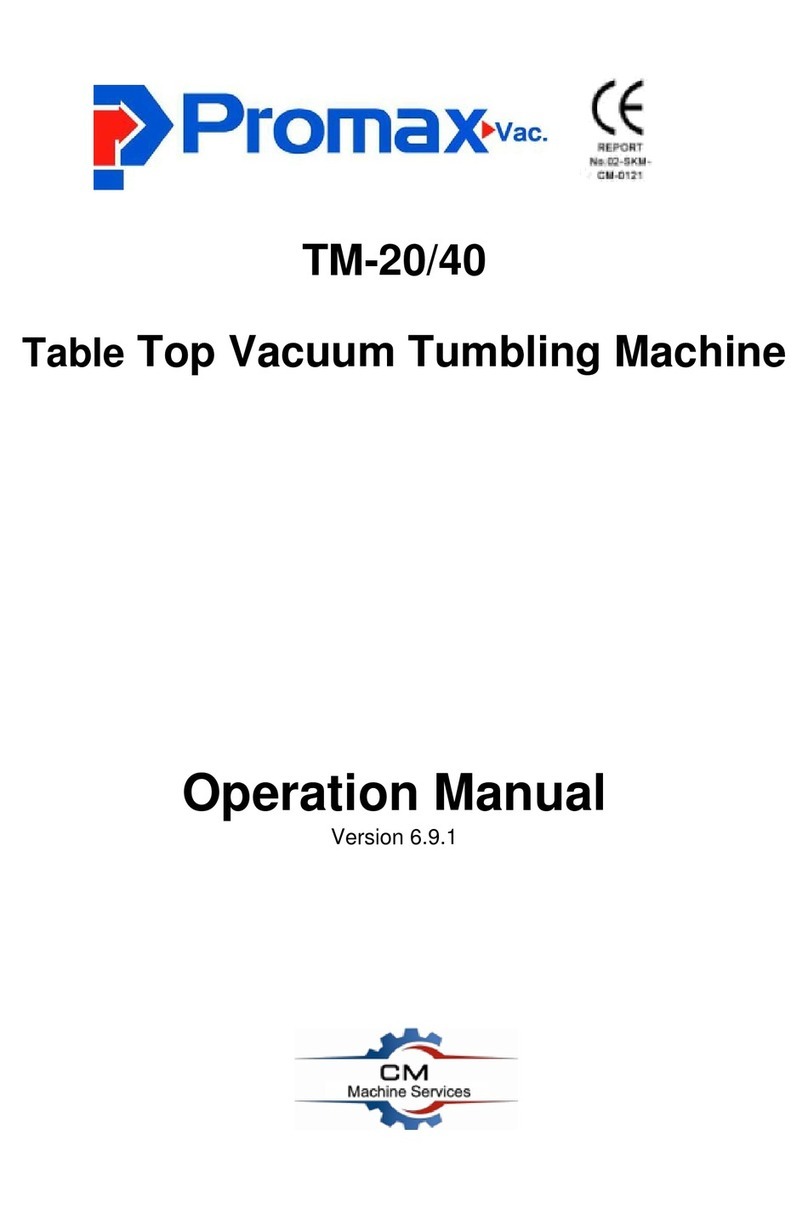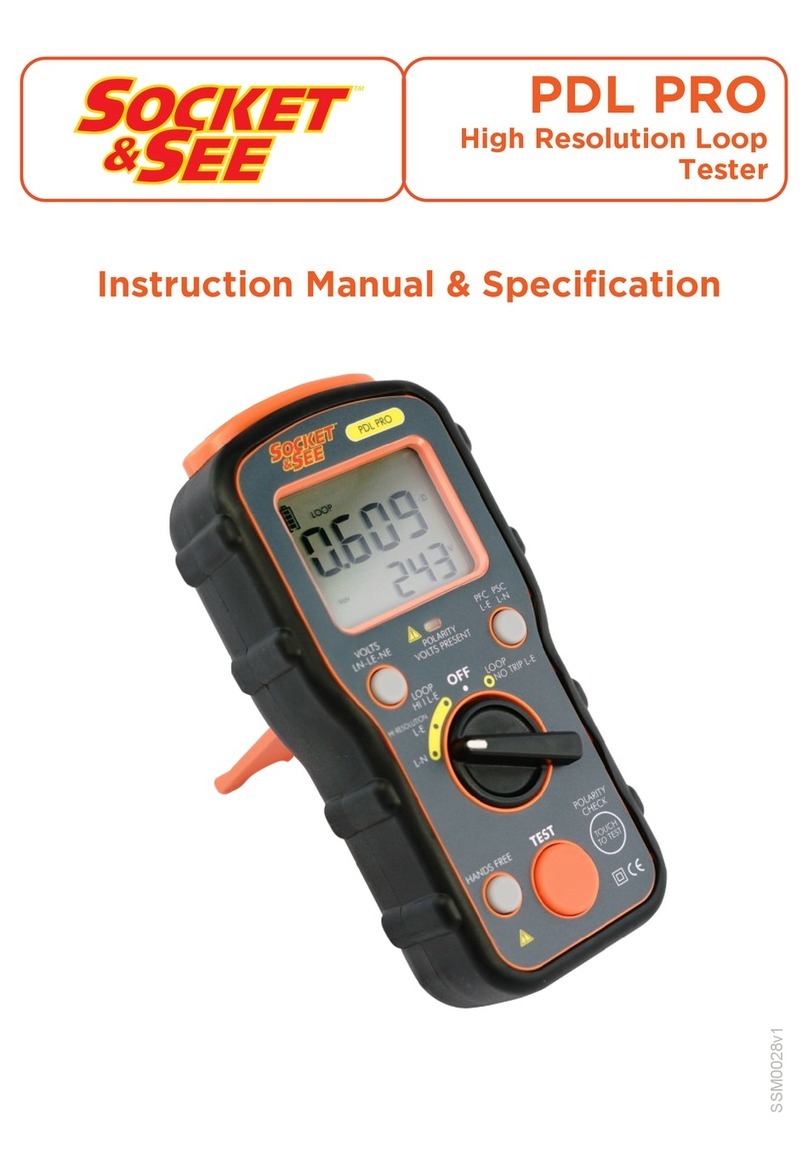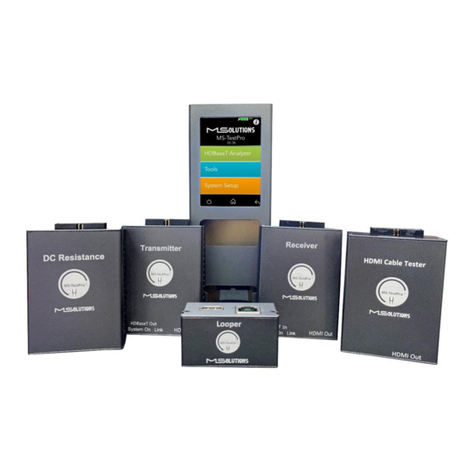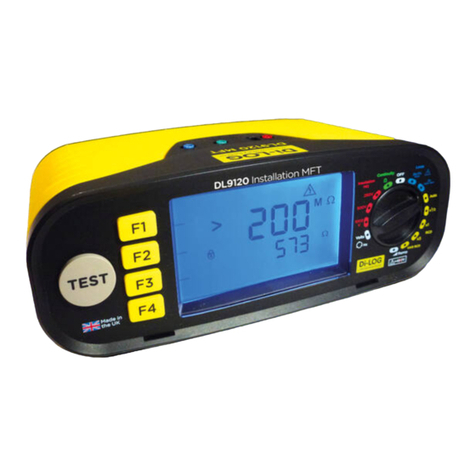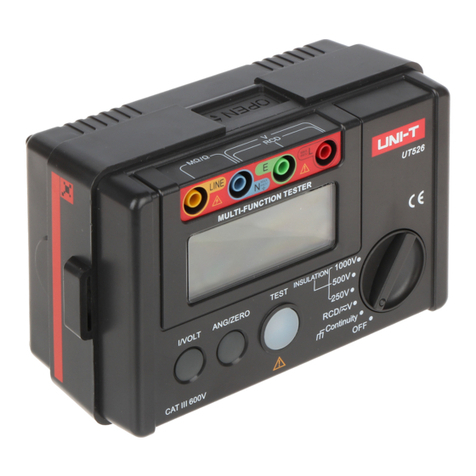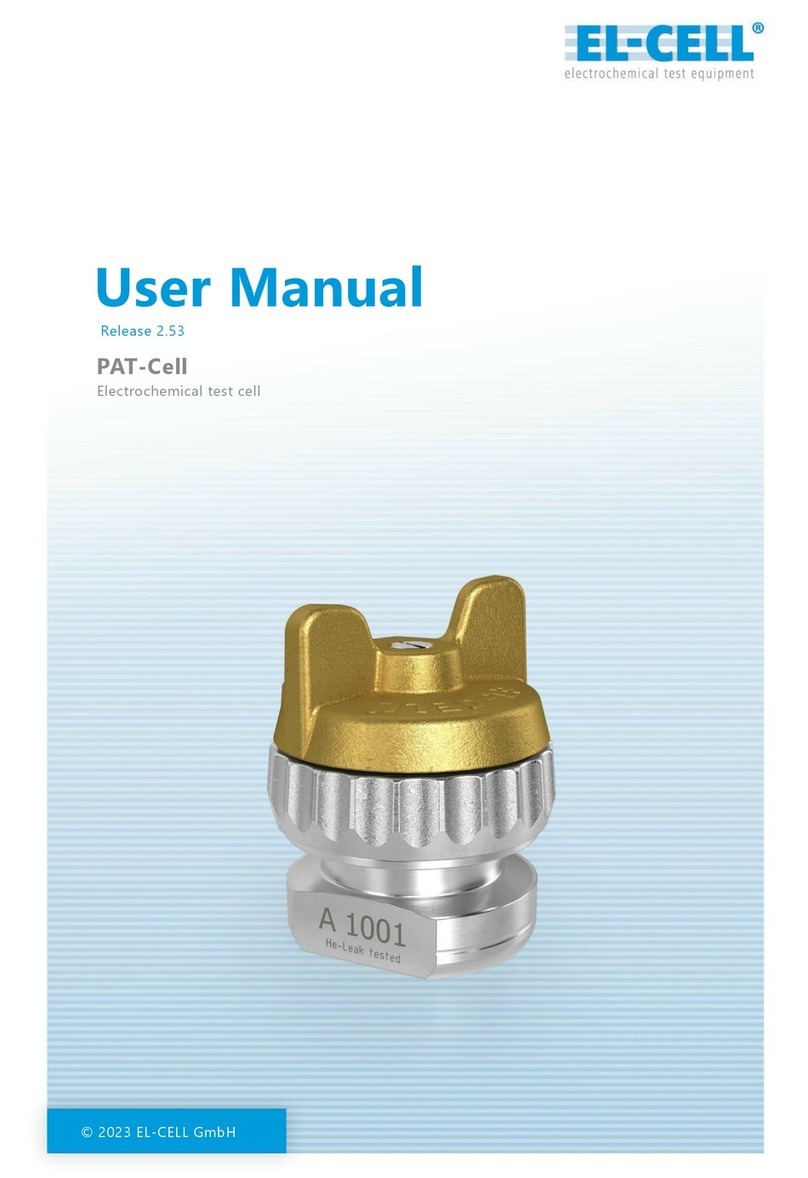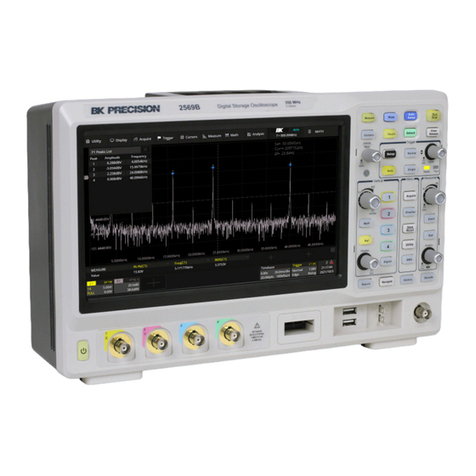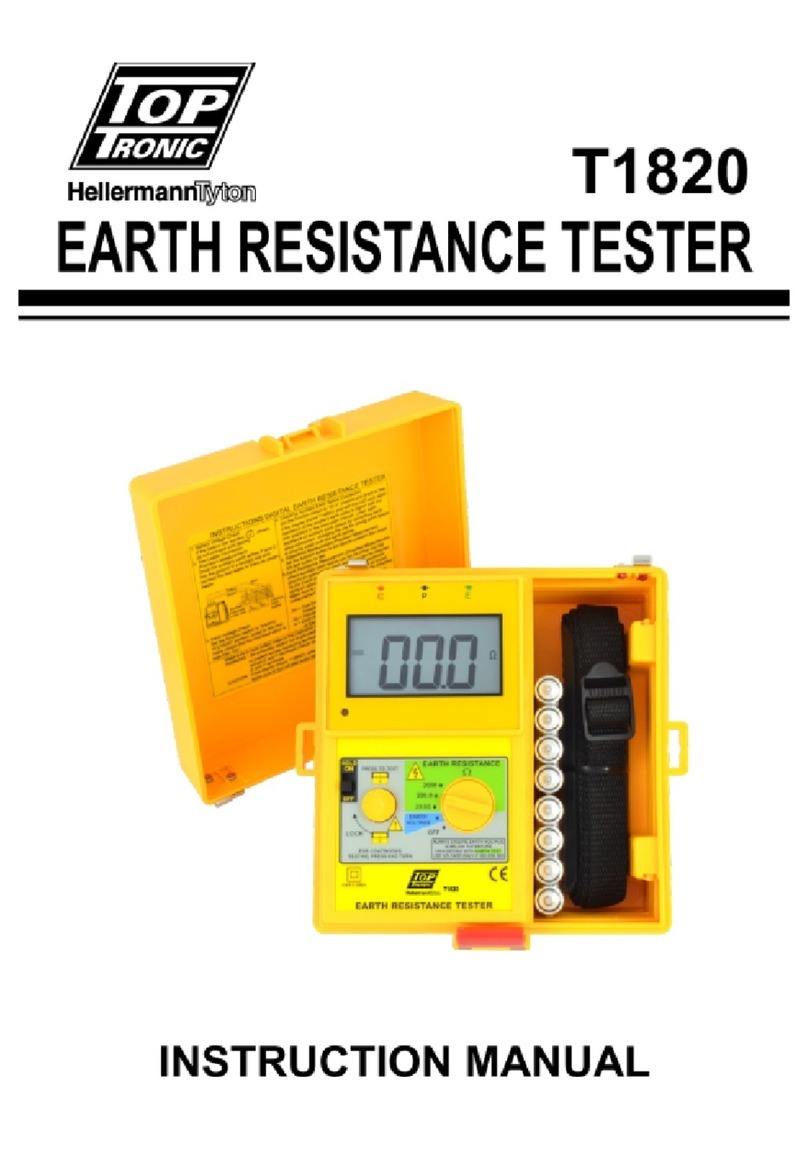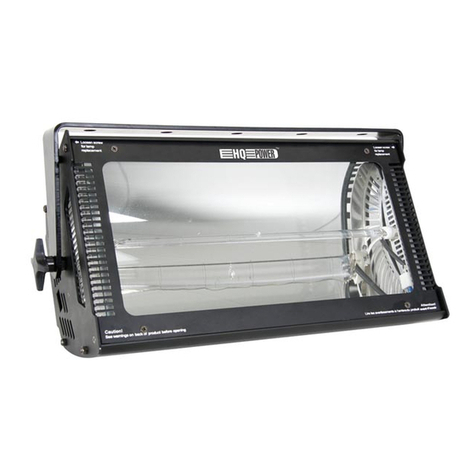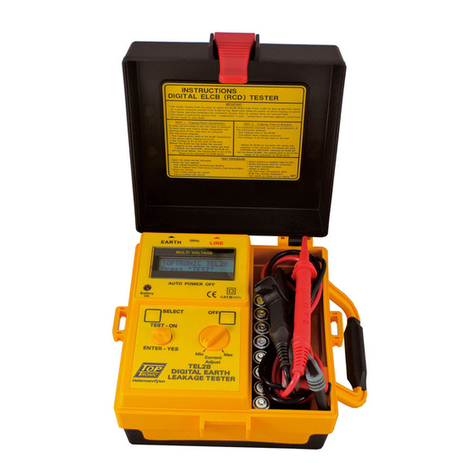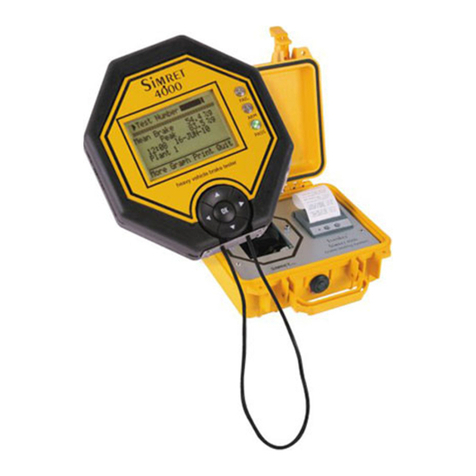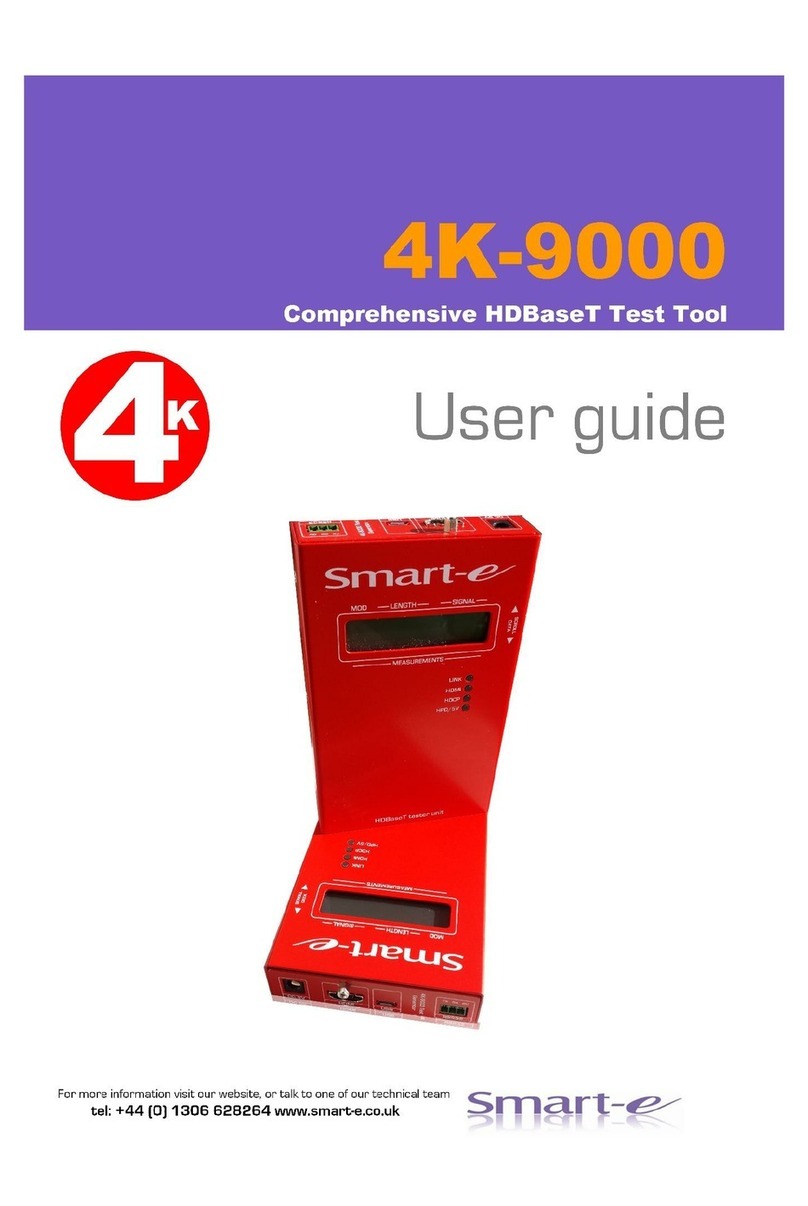TIC SDR-OMNI User manual

NOTICE:
The information contained in this manual is subject to change without notice.
Tel-Instrument Electronics Corp. makes no warranty of any kind to this material, nor shall be liable including but
not limited to, errors contained herein or for incidental or consequential damages in connection with the
furnishings, performance, or use of this material.
COPYRIGHT NOTICE
© 2023 Tel-Instrument Electronics Corp.
Reproduction of this publication or any portion thereof by any means without the express written permission of
Tel-Instrument Electronics Corp. is prohibited. For further information, contact the Customer Support Manager,
One Branca Road, East Rutherford, NJ 07073. (201) 993-1600.

SDR-OMNI Avionics Test Set User Manual
Revision B 6 June 2023 Page i
TABLE OF CONTENTS
Warranty.....................................................................................................................................................................1
Safety Precautions.....................................................................................................................................................3
Electrostatic Discharge (ESD)....................................................................................................................................4
Chapter 1 Introduction................................................................................................................................................5
1.1 Scope.........................................................................................................................................................5
1.2 Features.....................................................................................................................................................5
1.3 Compliance ................................................................................................................................................5
Chapter 2 Preparation for Use...................................................................................................................................6
2.1 Unpacking ..................................................................................................................................................6
2.2 Accessories Provided.................................................................................................................................6
2.3 Battery......................................................................................................................................................19
Chapter 3 SDR-OMNI Overview..............................................................................................................................20
3.1 Controls....................................................................................................................................................20
3.2 Indicators and Connectors.......................................................................................................................21
Chapter 4 Powering ON and Initial Setup................................................................................................................24
4.1 Power On .................................................................................................................................................24
4.2 Power OFF...............................................................................................................................................24
4.3 Home Menu..............................................................................................................................................25
4.4 Global System Settings............................................................................................................................26
4.5 Charging the Battery................................................................................................................................28
4.6 Retrieving and Printing Test Reports.......................................................................................................29
4.7 Updating SDR-OMNI Software................................................................................................................29
4.8 ADMIN Mode............................................................................................................................................33
Chapter 5 Avionics Testing using the SDR-OMNI...................................................................................................34
5.1 Testing ATC Transponders......................................................................................................................34
5.2 Testing 1090 MHz ADS-B OUT ...............................................................................................................53
5.3 Testing 978 MHz UAT ADS-B OUT.........................................................................................................58
5.4 Testing 978 MHz UAT ADS-B IN and FIS-B............................................................................................63
5.5 Testing ACAS/TCAS Systems.................................................................................................................65
5.6 Testing ILS Systems................................................................................................................................70
5.7 Testing VOR Systems..............................................................................................................................79
5.8 Testing DME Systems..............................................................................................................................83
5.9 Testing ELT Systems...............................................................................................................................86
5.10 Testing Aircraft Communications (HF/VHF/UHF COMM Transceivers)..................................................90

User Manual SDR-OMNI Avionics Test Set
Page ii 6 June 2023 Revision B
5.11 Testing Aircraft Audio Systems................................................................................................................92
5.12 Testing SELCAL Systems........................................................................................................................95
Chapter 6 Antenna and Cable Testing Using the SDR-OMNI.................................................................................97
6.1 VSWR/Distance-to-Fault Calibration........................................................................................................97
6.2 Measuring VSWR and/or Return Loss.....................................................................................................99
6.3 Measuring Distance to Fault (DTF)........................................................................................................101
6.4 Cable Loss Testing.................................................................................................................................104
Chapter 7 SDR-OMNI System Menu.....................................................................................................................107
7.1 Test Reports...........................................................................................................................................108
7.2 GPS Status.............................................................................................................................................109
7.3 Maintenance...........................................................................................................................................109
7.4 Network Devices ....................................................................................................................................110
7.5 Users Manual.........................................................................................................................................110
7.6 Health.....................................................................................................................................................111
7.7 About......................................................................................................................................................111
Chapter 8 SDR-OMNI SPECIFICATIONS.............................................................................................................113
Chapter 9 Acronyms and Abbreviations ................................................................................................................125
Chapter 10 Navigation System Principles..............................................................................................................128
10.1 Instrument Landing System (ILS)...........................................................................................................128
10.2 VHF Omnidirectional Range (VOR).......................................................................................................132

SDR-OMNI Avionics Test Set User Manual
Revision B 6 June 2023 Page 1
WARRANTY
The Tel-Instrument Electronics Corp. warrants that each product Tel-Instrument Electronics Corp. manufactures
is free from defective material and workmanship for a period of two (2) years subject to the following terms and
conditions. Tel-Instrument Electronics Corp. will remedy any such warranted defect subject to the following:
•This warranty requires the unit to be delivered by the owner to Tel-Instrument Electronics Corp. intact for
examination, with all transportation charges prepaid to the factory, within two (2) years from the date of sale to
original purchaser. Tel-Instrument Electronics Corp. will solely determine when such defect exists.
•This warranty does not extend to any of Tel-Instrument Electronics Corp. products which have been subject to
misuse, neglect, accident, improper installation, or used in violation of operating instructions. This warranty
does not extend to units which have been repaired, calibrated, or altered in any way by a facility that is not
approved, in writing, by Tel-Instrument Electronics Corp. to perform such work. This warranty does not apply
to any product where the seals or serial number thereof has been removed, defaced, or changed, nor to
accessories not of Tel-Instrument Electronics Corp. manufacturing.
•This warranty is in lieu of all other warranties expressed or implied and all such other warranties are hereby
expressly excluded. No representative or person is authorized to assume for Tel-Instrument Electronics Corp.
any other liability or warranty in connection with the sale of Tel-Instrument Electronics Corp. products.
•This warranty does not cover or include batteries (batteries have a separate 90-day warranty).
•Additional information regarding the applications and maintenance of this equipment will be available from
time to time.
Obtaining Warranty Service
If the SDR-OMNI requires service or repair under the warranty, follow these steps to ensure proper handling:
NOTE
The SDR-OMNI must be returned in its original shipping container. If the
original shipping container is not available, inform Customer Support of this
when contacting them.
1. Contact Tel-Instrument Electronics Corp. Customer Support using the contact information below. Customer
Support will review the matter and, if validated, Return Material Authorization (RMA) number and form.
•+1 (201) 933-1600 (telephone)
•+1 (201) 933-7340 (fax)
•https://www.telinstrument.com
2. Pack the SDR-OMNI in accordance with Packing and Shipping for Warranty Service.

User Manual SDR-OMNI Avionics Test Set
Page 2 6 June 2023 Revision B
Packing and Shipping for Warranty Service
Before shipping the SDR-OMNI for warranty service, ensure that:
•You have an RMA number and completed form from Tel-Instrument Electronics Corp. Customer Service.
•You have the original shipping container. If you do not have the original shipping container, contact Tel-
Instrument Electronics Corp. Customer Service.
•You have paid the freight charges to ship the SDR-OMNI. Freight charges for shipping the product to Tel-
Instrument Electronics Corp. are the responsibility of the owner. However, Tel-Instrument Electronics Corp.
will pay the return shipping charges if the problem is determined to be covered under the warranty.
CAUTION
DO NOT ship the SDR-OMNI without packing it in a shipping container.
Shipping it without a shipping container may damage the SDR-OMNI.
NOTE
DO NOT ship any SDR-OMNI units before contacting Tel-Instrument
Electronics Corp. Customer Service.
DO NOT return any product without receiving an RMA number and form from
Tel-Instrument Electronics Corp. Customer Service.
To ensure prompt tracking and handling, the SDR-OMNI must be returned
with the completed RMA form.
The SDR-OMNI must be returned in its original shipping container. If the
original shipping container is not available, contact Customer Service.
1. Wrap the SDR-OMNI in bubble sheeting or plastic wrap.
2. Place the SDR-OMNI into its original packaging material and shipping container.
3. Place the RMA form on top of the SDR-OMNI unit inside the shipping container before sealing the shipping
container.
4. Provide the following information either in or written on the shipping container:
•The assigned RMA number written in bold letters on the outside of the shipping container.
•Model, Serial Number, and specific details about the problem.
•Point of contact (POC) name, return address, telephone number, and email address.
5. Use packing tape and seal all seams. If an industrial box stapler is used, be sure the staples do not protrude
through the box to prevent injury to personnel and damage to the equipment.
6. Firmly affix the shipping label and ship the SDR-OMNI to the following address:
Tel-Instrument Electronics Corp.
One Branca Road
East Rutherford, NJ 07073
(201) 993-1600
Attn: Repair Department

SDR-OMNI Avionics Test Set User Manual
Revision B 6 June 2023 Page 3
SAFETY PRECAUTIONS
The following are general safety precautions that are not related to a particular test or procedure. These are
recommended procedures that all personnel must apply during operation and maintenance. The operator must
have general knowledge of electrical theory and the dangers associated with it.
1. Before performing any series of tests, thoroughly read and understand all procedures before performing them.
2. The various SDR-OMNI connectors, switches, and controls can be located by referring to Chapter 3.
3. Take the time to learn the proper operation and function of the SDR-OMNI. Complete knowledge of the Test
Set and its capabilities greatly reduces the time it takes to complete the tests.
4. Pay particular attention to WARNINGS, CAUTIONS, and NOTES and that may accompany some test and
operational procedures.
5. Observe all standard safety procedures when working with live voltages. The potential for electric shock
exists any time the SDR-OMNI is removed from its case.
6. DO NOT service or adjust the unit alone. Always be in the presence of another person when working with live
voltages.
7. Thoroughly inspect the equipment and the local area for potential hazards. Loose clothing and jewelry should
be removed anytime the test set is being utilized or serviced.
8. Be familiar with general first aid procedures and Cardiopulmonary Resuscitation (CPR).
9. Ensure the test equipment and tools you use are in good operational condition and not damaged in any way.
10. Use only approved replacement parts. Failure to use factory approved parts may cause damage to personnel,
the test set, and possibly void the warranty.
WARNINGS
WARNING
An operating procedure or practice that, if not correctly followed, could result in
death or personal injury.
CAUTIONS
CAUTION
An operational procedure or practice that, if not followed correctly, can result in
damage to or destruction of equipment.

User Manual SDR-OMNI Avionics Test Set
Page 4 6 June 2023 Revision B
NOTES
NOTE
An operating procedure or condition that requires emphasis.
ELECTROSTATIC DISCHARGE (ESD)
The SDR-OMNI internal parts are ESD sensitive. An ESD may damage integrated circuits or semiconductors
located within the SDR-OMNI. Only qualified personnel should service the SDR-OMNI to prevent damage. While
performing tests or maintenance, users must adhere to the following guidelines to avoid ESD. These guidelines
are meant only as a reminder; users must consult local directives and follow standard operating procedures
before servicing or repairing the SDR-OMNI.
•Wear a properly grounded wrist strap and remain in contact with an approved grounding point.
•Do not touch the connector pins or backplanes of ESD Sensitive circuits or parts.
•Ensure soldering irons are grounded before use.
•Do not remove any components or disconnect any connectors located in the SDR-OMNI with the power “ON”.
•Properly ground all test equipment being used. Refer to the test equipment operating manual for information.
•Place all removed components or parts in or on an approved conductive package.
Most ESD devices or circuits and common points are readily identified using several different methods. See
Figure 1 for example ESD labels.
Figure 1. Example ESD Labels
The European Conformity (CE) (International Electric Commission (IEC)) marking symbols may be used in
different locations throughout the manual and are also located on and in the SDR-OMNI. Observe these warnings
and markings and follow standard electrical safety anytime you use live circuits. See Figure 2 for example
markings.
Figure 2. Example CE Markings
2023-CLS-TIC-0002
2023-CLS-TIC-0003

SDR-OMNI Avionics Test Set User Manual
Revision B 6 June 2023 Page 5
CHAPTER 1 INTRODUCTION
1.1 SCOPE
This manual is intended to familiarize the user with the operating procedures necessary to properly use the SDR-
OMNI Avionics Test Set.
1.2 FEATURES
The SDR-OMNI is a lightweight, software-defined radio frequency (RF) test set for testing RF avionics in the 200
kilohertz (kHz) to 1.6 gigahertz (GHz) range. The SDR-OMNI is designed to test all basic navigation and
communications avionics functions common to modern civil and commercial aircraft, with provisions for certain
military avionics test requirements.
It uses software defined signal processing to test complex avionics navigations and communication signals.
The SDR-OMNI can be powered by either battery or AC adapter. The SDR-OMNI includes a lithium-ion (Li-Ion)
battery that lasts 6 hours with continuous operation or 24 hours on a 20% duty cycle. The SDR-OMNI also
includes an AC adapter (100-240 Volts AC (VAC), 47-63 hertz (Hz)) that can power the device and charge the
battery.
1.3 COMPLIANCE
This Product Meets or Exceeds the essential requirements of applicable European Directives as follows:
•EN 55022, B
•EN 61000-4-2, L2&3, B
•EN 61000-4-4, L2&3, B
•EN 61000-3-2, A
•EN 61000-4-3, L3, A
•EN 61000-4-6, L3, A

User Manual SDR-OMNI Avionics Test Set
Page 6 6 June 2023 Revision B
CHAPTER 2 PREPARATION FOR USE
This section contains all necessary information on the initial unpacking, inspection, and setup of the SDR-OMNI.
Each SDR-OMNI has already undergone a comprehensive series of tests, full calibration, and Quality Assurance
checks before shipment from Tel-Instrument Electronics Corp.
2.1 UNPACKING
1. After receiving the SDR-OMNI, inspect the shipping container for damage. Note any damage in case the
SDR-OMNI unit is also damaged.
2. Remove the SDR-OMNI from the shipping container and packaging material. Retain the shipping container
and packaging material for future shipment or storage.
WARNING
DO NOT use a damaged SDR-OMNI. Using a damaged SDR-OMNI may
cause death or serious injury.
3. Inspect the SDR-OMNI for damage to casing, connectors, switches, buttons, and display screen. If damage is
found, DO NOT use the SDR-OMNI and contact Tel-Instrument Electronics Corp. Customer Service in
accordance with the Warranty. Make sure to inform Customer Service if the shipping container is also
damaged.
4. Verify that all the accessory items listed in Table 2-1 were received.
2.2 ACCESSORIES PROVIDED
Table 2-1. Accessories Included with the SDR-OMNI Avionics Test Set
DESCRIPTION
TIC PART
NUMBER
QUANTITY
Transit Case, Rugged
64030103
1
AC Power Adapter/DC Charger (& AC Power Cord)
88000183/
74000002
1 each
L-Band Directional Antenna
40030046
1
Telescopic Antenna
40030023
1
GPS Antenna
40030036
1
Wi-Fi Antenna
40030035
1
VSWR Return Loss Bridge
40200231
1
VSWR Open/Short Calibration Load
31020162
1
Kickstand Mount
88000185
1
Headset
75011002
1
TAP-OMNI Antenna Coupler
90000150
1

SDR-OMNI Avionics Test Set User Manual
Revision B 6 June 2023 Page 7
DESCRIPTION
TIC PART
NUMBER
QUANTITY
TAP-OMNI Whip Antenna Adapter
54000044
1
10-Meter Antenna Coupler Cable
75010601
1
3-Meter Direct Connect Cable
75010605
1
VSWR Bridge Connect Cables, 12 in
(BNC-male to N-male)
75010600
2
Insertion Loss Calibration Cable, 12 in
(BNC-male to BNC-male)
75010599
1
USB Adapter Cable (A-male to Micro B-male)
75010598
1
USB Adapter Cable (A-female to Micro B-male)
75010603
1
Aircraft Audio Test Cable –civil
75010582
1
CD-ROM –Manual & Download Utility Program
90008147
1
RF Adapter Kit
Adapter, TNC-female to BNC-male
Adapter, N-male to TNC-female
Adapter, N-male to BNC-female
48040171
48040178
48040167
1
1
1

User Manual SDR-OMNI Avionics Test Set
Page 8 6 June 2023 Revision B
2.2.1 Transit Case
The Transit Case (Figure 2-1) safely stores the SDR-OMNI and its accessories while they are not in use. The
Transit Case can be carried using the carrying handles, or the Transit Case can be rolled using the two wheels
and extendable handle. The Transit Case can be secured shut with two latches.
Additionally, four metal grommets can be used to secure the Transit Case shut with zip ties or locks (not
included). The Transit Case cover has a rubber gasket to prevent water from entering the Transit Case. The
Transit Case has a foam lining and a tray insert to organize and protect the SDR-OMNI and its accessories.
Figure 2-1. Transit Case
2023-CLS-TIC-0004

SDR-OMNI Avionics Test Set User Manual
Revision B 6 June 2023 Page 9
2.2.2 AC Power Adapter/DC Charger
The AC Power Adapter/DC Charger (24 Vdc) (Figure 2-2) charges the battery and supplies power to the unit for
operation. See Table 8-2 for power specifications.
Figure 2-2. AC Power Adapter/DC Charger (24 Vdc)
2.2.3 Telescopic Antenna
Most HF/VHU/UHF radio checks will be performed over-the-air using the supplied Telescopic Antenna
(Figure 2-3). The length of the antenna should be adjusted for the wavelength of the frequency band being tested
(refer to Table 2-2 and Table 2-3).
Many basic functional tests (such as Very High Frequency (VHF) Omnidirectional Radio (VOR), Instrument
Landing System (ILS) Localizer (LOC), Glideslope (GS), and Marker Beacon (MB)), Emergency Locator
Transmitter (ELT), Selective Calling (SELCAL), and Communication (COMM) tests) can be performed by a single
operator from the cockpit. The Telescopic Antenna can be extended out of the passenger door or the pilot’s
window. Otherwise, the SDR-OMNI should be placed 10 to 30 feet (3 to 9 meters) from the unit under test (UUT)
antenna with an unobstructed line-of-sight.
Hangars, ramp equipment, and other aircraft may interfere with test signals. If unexpected test results are
observed, first attempt to move the SDR-OMNI to a location that could minimize multi-path interference and
retest.
2023-CLS-TIC-0005

User Manual SDR-OMNI Avionics Test Set
Page 10 6 June 2023 Revision B
Figure 2-3. Telescopic Antenna
Table 2-2. NAV Frequencies
FUNCTION TESTED
ANTENNA LENGTH
MB (75.0 MHz)
Fully Extended
VOR (108.00-117.95 MHz)
28.5 inches (72 cm)
LOC (108.10 –111.95 MHz)
28.5 inches (72 cm)
GS (329.15 –335.00 MHz)
9.5 inches (24 cm)
Table 2-3. COMM Frequencies
FREQUENCY TESTED
ANTENNA LENGTH
HF 29 –88 MHz
Fully Extended
VHF 108-118 MHz
28.5 inches (72 cm)
VHF 118-156 MHz
24 inches (61 cm)
VHF 156-174 MHz
9.5 inches (24 cm)
UHF 225 –299 MHz
11 inches (28 cm)
UHF 300 –406 MHz
Base section only –fully
collapsed
2.2.4 L-Band Directional Antenna
The L-Band Directional Antenna (Figure 2-4) has a flexible neck and guide arrows to properly position the
antenna for L-Band (Transponder, TCAS, UAT) testing. The antenna is vertically polarized, so the flat portion of
the antenna must be oriented vertically when pointing at the aircraft’s ATC, TCAS, or DME antenna.
2023-CLS-TIC-0006

SDR-OMNI Avionics Test Set User Manual
Revision B 6 June 2023 Page 11
Figure 2-4. L-Band Directional Antenna
2.2.5 Wi-Fi Antenna
The Wi-Fi Antenna (Figure 2-5) enables the SDR-OMNI to connect to a wireless network.
Figure 2-5. Wi-Fi Antenna
2.2.6 GPS Antenna
The GPS Antenna (Figure 2-6) enables the SDR-OMNI’s internal GPS receiver to receive GPS signals.
Figure 2-6. GPS Antenna
2023-CLS-TIC-0007
2023-CLS-TIC-0008
2023-CLS-TIC-0009

SDR-OMNI Avionics Test Set User Manual
Revision B 6 June 2023 Page 13
2.2.8 Micro USB Adapter Cables
Two Micro USB Adapter Cables (Figure 2-8) are provided. The USB-A to Micro USB Cable (1) enables the SDR-
OMNI to connect to a personal computer (PC) for uploading new program file into the SDR-OMNI and
downloading test reports. A second cable, USB-A to Micro B-Female Cable (2), is also provided if needed.
Figure 2-8. Micro USB Adapter Cables
2.2.9 VSWR Return Loss Bridge
The VSWR Return Loss Bridge (Figure 2-9) is used for making VSWR and Distance-to-Fault (DTF)
measurements using the SDR-OMNI.
Figure 2-9. VSWR Return Loss Bridge
2023-CLS-TIC-0011
LEGEND
1 USB-A TO MICRO USB CABLE
2 USB-A TO MICRO B-FEMALE CABLE
1
2
2023-CLS-TIC-0012

User Manual SDR-OMNI Avionics Test Set
Page 14 6 June 2023 Revision B
2.2.10 VSWR Open/Short Calibration Load
The VSWR Open/Short Calibration Load (Figure 2-10) is used during the VSWR calibration process. One side is
an open circuit, and the other side is a short circuit.
Figure 2-10 VSWR Open/Short Calibration Load
2.2.11 VSWR Bridge Connect Cables
Two identical 12-inch VSWR Bridge Connect Cables (Figure 2-11) are provided to connect the SDR-OMNI to the
INPUT and OUTPUT ports on the VSWR Return Loss Bridge. They have a BNC-male on one end and an N-male
on the other end.
Figure 2-11 VSWR Bridge Connect Cables
2023-CLS-TIC-0013
2023-CLS-TIC-0014

SDR-OMNI Avionics Test Set User Manual
Revision B 6 June 2023 Page 15
2.2.12 Insertion Loss Calibration Cable
The Insertion Loss Calibration Cable (Figure 2-12) is a 12-inch BNC-male to BNC-male cable that connect the
ANT-A and ANT-B ports on the SDR-OMNI during the Cable Loss calibration procedure.
Figure 2-12 Insertion Loss Calibration Cable
2.2.13 Headset
The Headset (Figure 2-13) can be used to listen to HF, VHF, or UHF COMM radio voice transmissions from an
aircraft and for transmitting voice from the SDR-OMNI to the aircraft COMM radio.
Figure 2-13 Headset
2.2.14 TAP-OMNI Antenna Coupler & Whip Antenna Adapter
The TAP-OMNI Antenna Coupler (Figure 2-14) is designed to fit over a shark fin style ATC Transponder antenna
to provide a high level of RF attenuation and prevent the testing of the aircraft transponder/ADS-B device from
2023-CLS-TIC-0015
2023-CLS-TIC-0016

User Manual SDR-OMNI Avionics Test Set
Page 16 6 June 2023 Revision B
interfering with ATC operations. It also enables the test operator to obtain much more accurate and repeatable
power and sensitivity readings, as it greatly reduces multi-path and uncertainty when compared to over-the-air
testing with a directional antenna.
A Whip Antenna Adapter is also included in the SDR-OMNI kit. It is used when testing aircraft that have a short L-
Band dipole transponder antenna. The whip adapter fits into the bottom of the TAP-OMNI, which is then placed
over the dipole antenna and clamped into place. The whip adapter serves to center the dipole antenna in the
TAP-OMNI so that the operator obtains reliable test results.
Figure 2-14 TAP-OMNI Antenna Coupler & Whip Antenna Adapter
2023-CLS-TIC-0017
LEGEND
1 TAP-OMNI ANTENNA COUPLER
2 WHIP ANTENNA ADAPTER
1
1
2
Other manuals for SDR-OMNI
1
Table of contents
Other TIC Test Equipment manuals


